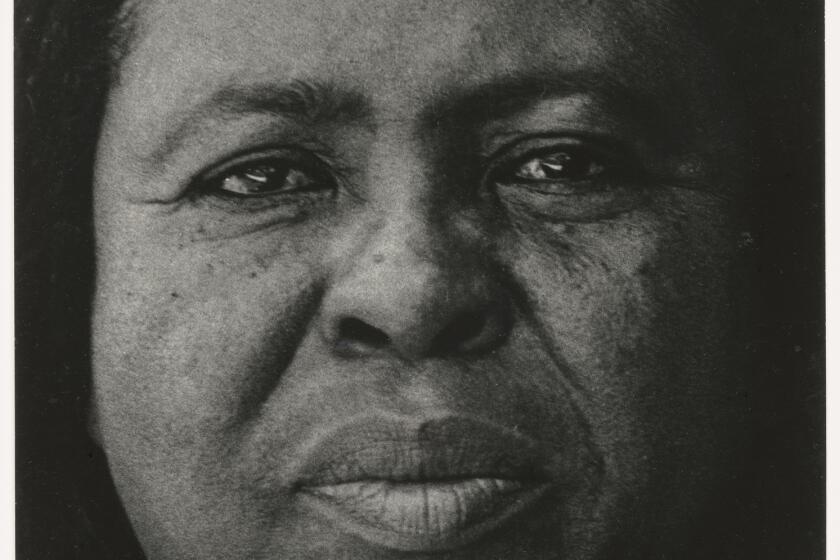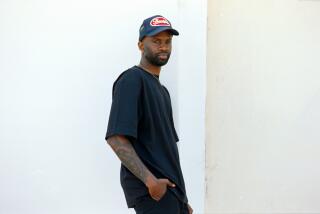How an overlooked Black collective carved out pathways for a new generation of photographers
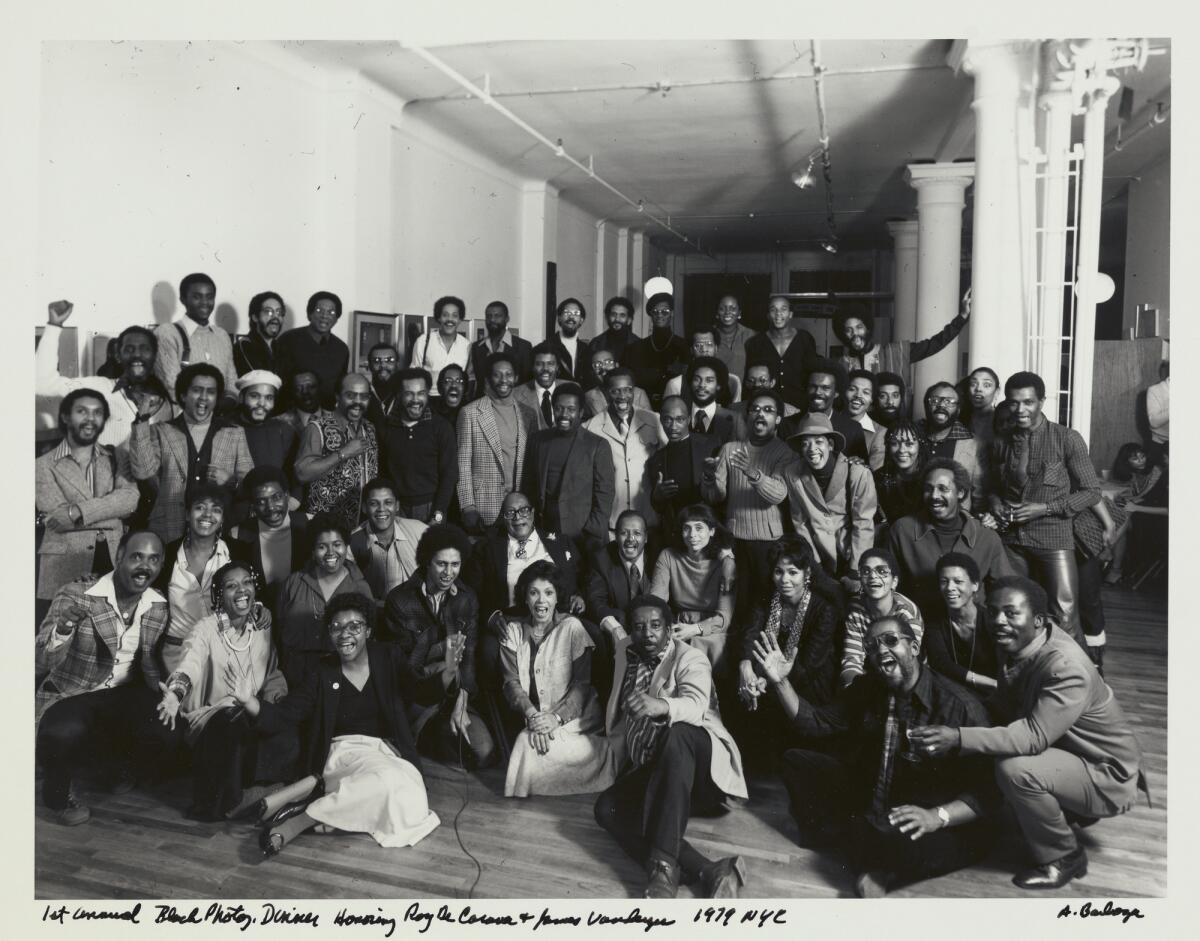
- Share via
When the Studio Museum in Harlem presented the work of the Kamoinge Workshop in a 1972 group show, it was many art enthusiasts’ first introduction to the group — including a New York Times critic who wrote a piece asking the question: Why hadn’t the art world properly recognized the work of these artists before?
Kamoinge, a photography collective made up of 12 members at the time, was familiar with mainstream media and art spaces overlooking their work. So they took the lead instead, showing their photos in an unofficial Kamoinge gallery, critiquing each other’s work, putting together portfolios and mentoring young photographers. Their black-and-white images captured the many experiences of the Black community, and in their work they explored abstraction, street photography, portraiture and more.
Roy DeCarava photographed stars like Billie Holiday; he was the first Black photographer to receive a Guggenheim fellowship in 1952, and he spent a year photographing Harlem. Herbert Randall photographed the Freedom Summer movement in 1964 and captured the streets of the Lower East Side during that era. Ming Smith documented people everywhere from Harlem to Senegal, also taking ethereal photographs of stars like Sun Ra and James Baldwin. Anthony Barboza photographed Harlem in the 1970s, put together an artist’s book featuring portraits of Kamoinge members and their art and captured a still-emerging Grace Jones in 1970.
In their photographs, Kamoinge Workshop members explored varying subject matters and styles with ease. They pushed back against media portrayals that cast Black communities in a negative light and, in forming the collective, bolstered each other’s work.
Louis Draper, a founding member of the collective, gained acclaim for his photorealism but also for work like his 1971 portrait of civil rights activist Fannie Lou Hamer for Essence. He documented much of the collective’s growth, as well. After Draper’s sister presented the artist’s archive to the Virginia Museum of Fine Arts (VMFA) — Draper had studied at Virginia State College — Sarah Eckhardt, associate curator of modern and contemporary art, saw the need to share Kamoinge’s story on a national level.
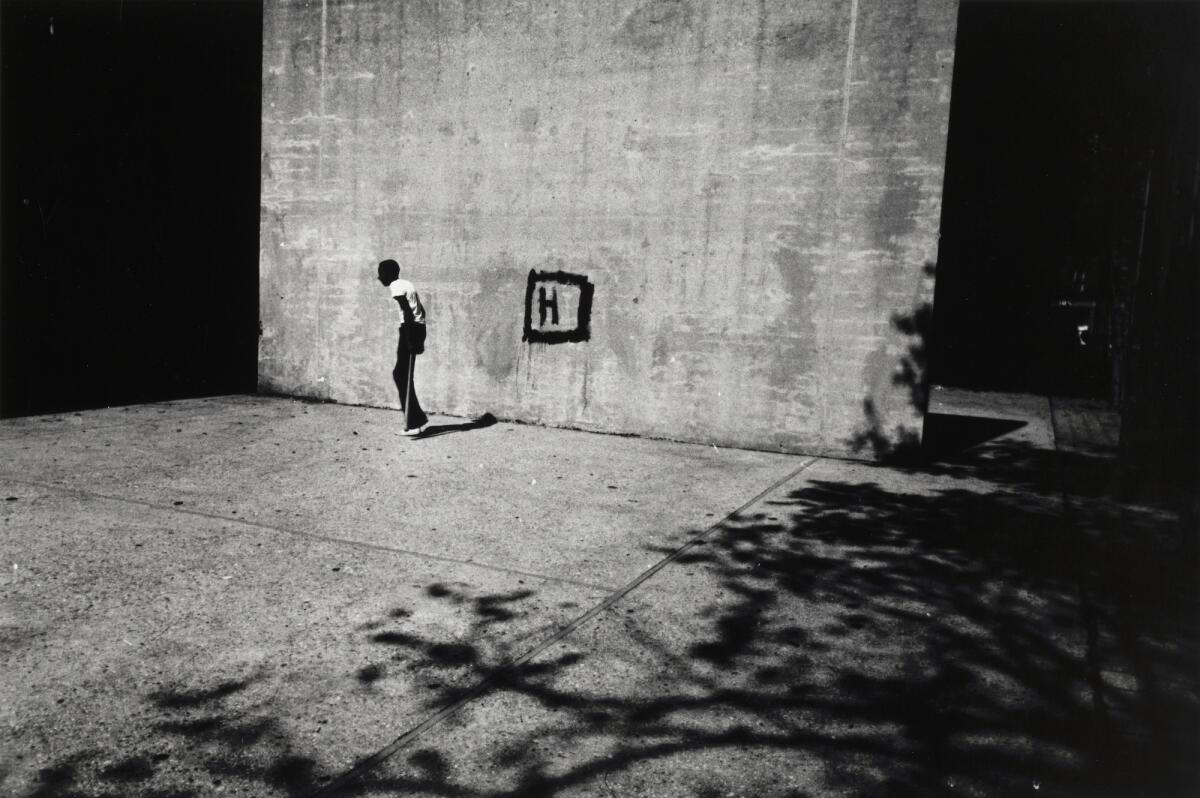
“That was one of the most basic goals: the idea that these works should be a part of the story of the history of photography — and of American art from that era,” says Eckhardt.
The exhibition of the collective’s work traveled to the Whitney Museum of American Art, where it opened in November 2020, and the Cincinnati Art Museum in February 2022, and recently landed at the Getty, its biggest venue to date. As the Los Angeles Times’ art critic Christopher Knight puts it, “Working Together: The Photographers of the Kamoinge Workshop” is “an engrossing exhibition” that captures the importance of the New York-based collective, highlighting the work of 14 members making images in the 1960s and 1970s.
“When I came to this collection, I was interested to see that 49% of the photography collection at the Getty is American photographers, but something like less than 1% of that is by artists of color or of people of color,” says Mazie Harris, assistant curator in the Getty Museum’s department of photographs. “And I thought: Well, that’s not a very American collection.”
“Working Together” is the first major exhibition of the collective’s work, but the show’s significance reaches beyond the walls of the institution. The collective’s members refusal to be easily categorized as photographers (their work ranged from documentary to abstract) and their unrelenting efforts to create their own opportunities has carved out pathways for the generations of Black photographers after them.
Review: Black photographers founded Kamoinge Workshop in 1963. Now their biggest show hits the Getty
A 1963 collective of Black artists resisted the stereotypes of mass media. The power of their image-making is on exhibition in L.A. for a limited time.
“In my work, I don’t feel the need to prove to anyone else that I’m human,” says Los Angeles-based photographer and Occidental College assistant professor Janna Ireland. “I’m showing my humanity for people who already understand it. But I have that luxury because of the Kamoinge Workshop, because of the artists and generations that came before me who laid the groundwork.” Ireland’s work touches on themes like home and family through portraiture and still life, and her black-and-white photographs of Black architect Paul R. Williams were published in the 2020 book “Regarding Paul R. Williams: A Photographer’s View.”
Courtney Coles, a Los Angeles-based photographer, writer and professor, remembers searching for Black image makers as a college student after not being taught about them in class. Carrie Mae Weems, Gordon Parks and Roy DeCarava were important to her because they captured “genuine, everyday, ordinary Black life” in their art, rather than trauma or violence.
“While they were all aware of what was happening in the world around them, they carved this space for them to be soft,” says Coles, who emphasizes that as a Black lesbian, photography allows her to create a softness that society often doesn’t give her.
Kamoinge member Adger Cowans remembers being in school and noticing that seminal texts like “The History of Photography” didn’t include the work of any Black artists. This gap in knowledge, overdue to be closed, seems to be shifting: Eckhardt says that university professors have recently shared that they have added Kamoinge’s art to their syllabus.

Given the lack of attention that traditional art institutions gave the Kamoinge Workshop, its members created their own opportunities. It’s an ethos that Black photographers influenced by the workshop still embrace today. In 2016, Coles and a friend, Erica Lauren, founded the artist collective To the Front, focused on female and nonbinary artists after being passed on for jobs they wanted. Los Angeles-based photographer Lorenzo Diggins Jr. founded colour bloc creativ, a design studio and publisher, so that he could make the work he wanted without waiting for anyone’s approval.
“They walked so I could run,” Diggins says of the Kamoinge artists. “It’s cool that I’m an extension of them, in a way.”
The Kamoinge photographers pushed back against stereotypes and generalizations about the Black community found in mainstream media, something Diggins and Coles admire. “I’m shaping my own narrative of what the Crenshaw district or what South-Central is,” Diggins says. “It’s more than ‘Boyz n the Hood’ or ‘Menace II Society.’ It’s actually a beautiful place.”
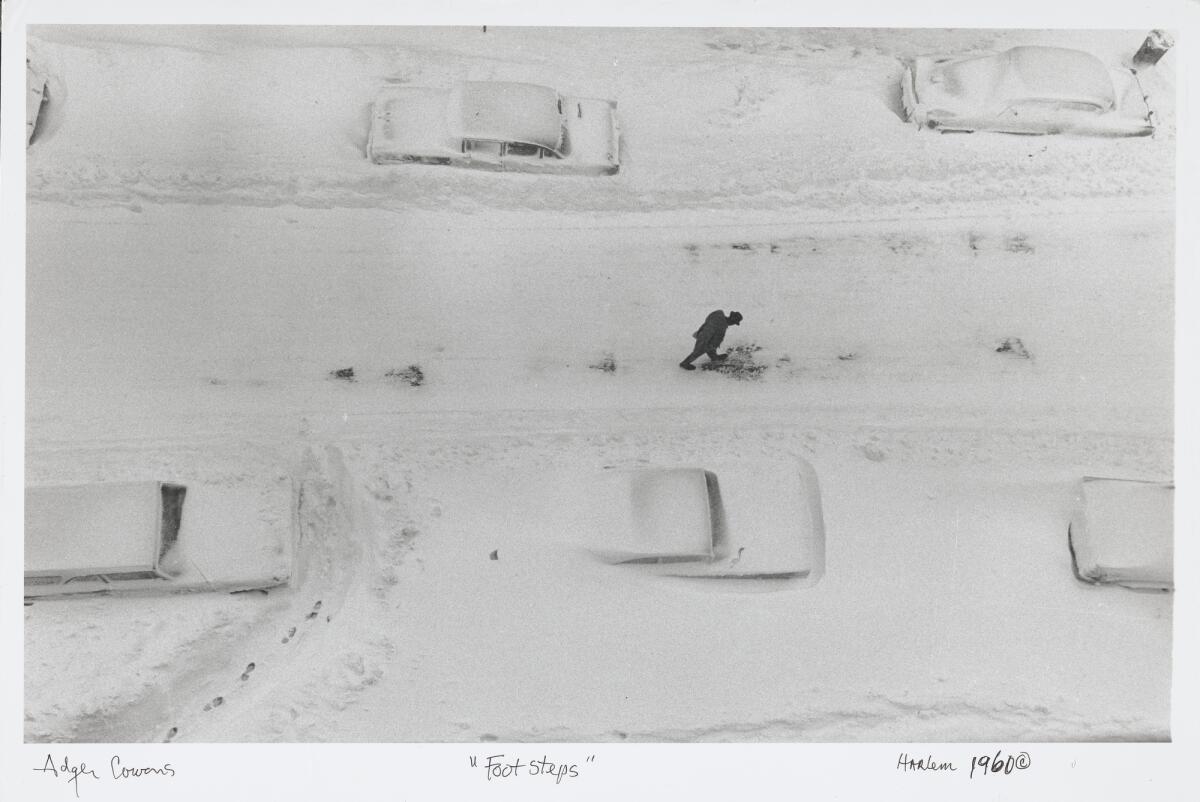
The legacy of the collective continues; Draper’s archive has been recently digitized and Eckhardt received messages from scholars “excited that they could access the archive while the libraries were closed, because it was giving them important historic information.” Harris’ conversations with, and research about, Barboza will appear in the upcoming monograph “Eye Dreaming: Photographs by Anthony Barboza.” “It’s exciting that the Workshop is getting a significant amount of attention with so many members still alive,” says Ireland.
Today, the Kamoinge Workshop has become Kamoinge Inc., with Cowans (also featured in the exhibition) as president. In her research, Harris has also reflected on the work of similar collectives like the pre-World War II Japanese Camera Pictorialists of California (JCPC) and the Black Photographers of California, founded in 1984. The Getty also worked with three community organizations to widen the reach of the exhibition, Venice Arts, Inner-City Arts and LA Commons.
“To see collectives themselves, all throughout history, who chose themselves before the rest of the world caught up — that’s beautiful and magnificent,” says Coles. “You get further with your friends than you do by yourself.”
'Working Together: The Photographers of the Kamoinge Workshop'
Where: J. Paul Getty Museum, 1200 Getty Center Drive, Brentwood
When: Open Tuesdays through Sundays, through Oct. 9
Admission: Free; parking $10-$20
Info: (310) 440-7300, getty.edu
More to Read
The biggest entertainment stories
Get our big stories about Hollywood, film, television, music, arts, culture and more right in your inbox as soon as they publish.
You may occasionally receive promotional content from the Los Angeles Times.
